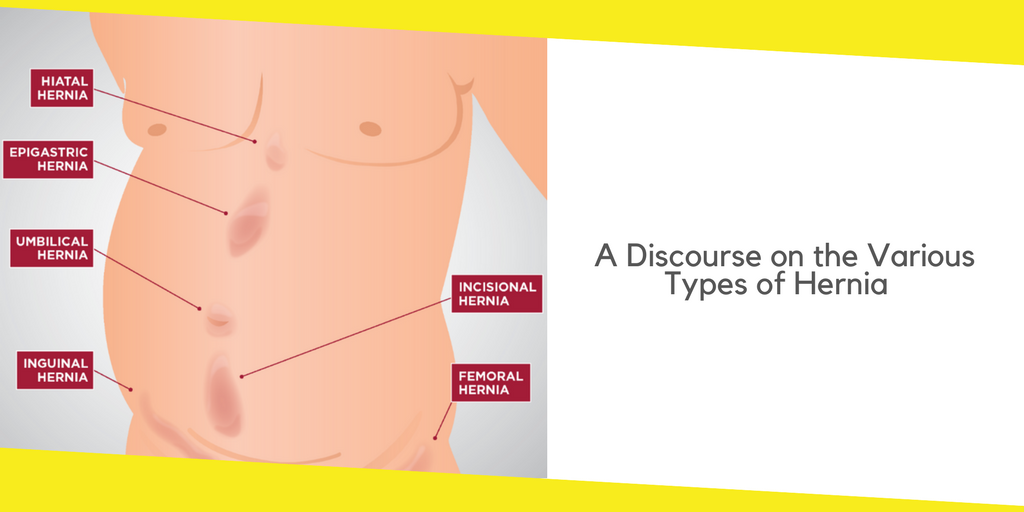A Discourse on the Various Types of Hernia
This post was last updated on September 17th, 2018

Any kind of ailment disrupts the quality of life to a great extent and hernia is one such disease that is not an exception to it. Hernia occurs when any organ like the intestine pushes through an opening in the tissue or the muscle that is responsible for holding it in the position like when the intestines break through the abdominal wall’s weakened area hernia is caused.
Hernias are also seen to occur in the belly button, upper thighs as well as the groin areas but in most cases they occur in the abdomen. You must keep it in mind that although most of the hernias do not pose a threat to life they do not disappear on their own. Surgery, many-a-times can prevent the potentially dangerous complications that hernia can cause.
Types of Hernia
There are different types of hernia depending on the location through which the hernia comes out. Have a look at the various types of hernia to get a clearer understanding.
1. Hiatal Hernia For this you have to understand first the precise location of the diaphragm. The diaphragm helps you to breathe by drawing and contracting air into the lungs. It is responsible for separating the organs in the chest from that of the abdomen. This occurs when a stomach portion juts out into the cavity of the chest through the diaphragm.
This type of hernia is mostly common in people over 50 years of age. Congenital birth defects are the primary cause if this condition starts in a child. Gastroesphageal reflex is almost always caused by hiatal hernia when the stomach contents are oozed into the oesophagus as a result of which a burning sensation is felt.
2. Inguinal Hernia – One of the most common types of hernia is the Inguinal Hernia. They make up about 70 percent of the hernias. When the intestine tears the wall of the lower abdomen which is known as the inguinal canal or pushes through a weak spot, this type of hernia occurs.
Among women the inguinal cord helps to hold the uterus in place while in men this is found in your groin. This area is where the spermatic cord traverses through the abdomen and into the scrotum. This cord is responsible for holding up the testicles.
This should be said that men are more susceptible to this type of hernia than women. This is because, shortly after birth, a man’s testicles get down through this cord and the inguinal cord is supposed to shortly close after them.
But at times, this cord does not close properly and has a weak area that is prone to this type of hernia.
3. Incisional Hernia – If you have got an abdominal surgery then incisional hernias can take place. The intestines can then push through the weakened tissue or the incision scar.
4. Umbilical Hernia – Children and babies under the age of 6 months are most prone to this type of hernia. At the time when the abdominal wall is bulged through by the intestines near the belly button this type of hernia occurs. When this happens you may observe a bulge in or near the belly button especially at a time when they are crying.
This is the only type of hernia that disappears by itself as the wall muscles of the abdomen get stronger with time. This happens mostly by the time the child turns 1 year old. In case the hernia does not go away by that time then surgery can be used.
The above are some of the major type of hernias that one may suffer from. It is always advisable that you take your physician’s advice for treating each of the types and if the doctor suggests, go for a quality hernia belt that will be effective and will help you to recover from it as soon as possible.
Recommended For You
Taking Care of Your Nervous System
Most Inside
Most Inside offers high-quality recommendations and valuable updates to enhance all aspects of your life, providing premium guidance and enriching experiences.



